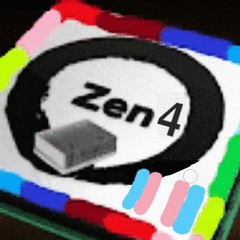-
Posts
54 -
Joined
-
Last visited
Awards
This user doesn't have any awards
Profile Information
-
Gender
Male
-
Location
Ottawa, Canada
-
Interests
PC building, video games, content creation, electric bikes
-
Biography
My first build changed my life. Thank u linos
-
Occupation
IT/Computer systems technician
System
-
CPU
Intel Core i7 10700k
-
Motherboard
Gigabyte Z490 Aorus Elite AC
-
RAM
32gb (4x8) Crucial Ballistix DDR4 3200
-
GPU
TUF Gaming RTX 3080 OC
-
Case
NZXT H510
-
Storage
2x WD Black SN750 1TB, Seagate Barracuda 2TB
-
PSU
Corsair RM850x
-
Display(s)
Asus VG248QG (OC 165hz)
-
Cooling
Be Quiet! Dark Rock Pro 4
-
Keyboard
Redragon K551 RGB
-
Mouse
Logitech G604 Lightspeed
-
Sound
SteelSeries Arctis 1 Wireless, Blue Snowball iCE
-
Operating System
Windows 10 Pro
-
Laptop
Acer Spin 1, Dell Latitude E6520
-
Phone
Google Pixel 4
- PCPartPicker URL
Recent Profile Visitors
465 profile views
EpicEric's Achievements
-
We are an architecture firm with about 40 employees. Most workstations use Revit 2020 but this issue has been observed on all the versions we have. All Revit files are saved in a central file server, a Windows Server 2019 VM on a Dell PowerEdge R720. We have two Datto E48 network switches, one directly connected to the server using a 4-port team, and one connected via 2x gigabit fiber uplink. From the switches, the workstations are connected through HTec 926E voIP desk phone gigabit passthroughs. The specific issue we are facing is that Revit will load for a very long time when opening or changing the 3D view on files. The size and complexity of the file seems to have some effect, but the smallest and simplest files are still affected. For example, if I change the viewing angle on a 3D file, Revit will load for about two minutes, Windows will report it as not responding, and after a while it will load. This happens even if only one user is using Revit and the file server. We have ruled out the following as potential causes: - Workstation performance. Even our newest systems (10700KF, 32GB DDR4, RTX A2000) are experiencing this issue. - Phone passthoughs do not hinder performance. - Users on both switches are experiencing the issue. - Utilisation of all resources, including workstation and server, are nowhere close to full. - Server is running brand new Crucial SSDs - We have given the VM 64gb of ram and 12 cores, did not help. - Transfering other files to and from the server works very fast and does not freeze. Any idea what the problem could be?
-
I have undone the bios update and reinstalled the original. I can't mess around with it for too long right now so I'll try it again when there's more resources, more information, better tools, and hopefully an even better vbios version. I have to say, the nvflash utility was super easy and I like it.
-
The cause was when I switched to quiet bios mode and back. I want to revert to the old bios. What is the easiest way of doing this? Could I use NVFlash and TechPowerUp's archive?
-
The Asus software doesn't mention anywhere what bios it thinks it's in, which makes this confusing. Is the EVGA one like that, too? Thanks. A few other things. I restarted the PC and Nvidia co troll panel now says that RBAR is turned off. It is the correct vbios version and the motherboard bios is set correctly still. Also, does this RBAR update keep compatibility with unsupported games? Will they work the same as they did before?
-
I have successfully updated the vbios, but my card is a dual bios card, and I don't know how to update the quiet mode bios. The program that I used to update it is meant for this card.
-
I updated the motherboard's BIOS, and I'm about to do the VBIOS. By the way, the bios update fixed the other issue I was having with XMP.
-

Question about XMP not working properly
EpicEric replied to EpicEric's topic in CPUs, Motherboards, and Memory
Good news, issue fixed. I updated the BIOS version from f2 (March 15th 2020) to f20d (March 11th 2021) and it boots with XMP. I have not fully tested it yet, though. -

Question about XMP not working properly
EpicEric replied to EpicEric's topic in CPUs, Motherboards, and Memory
HWiNFO reports it as F2, released on March 25th, 2020. I think you're right. -

Question about XMP not working properly
EpicEric replied to EpicEric's topic in CPUs, Motherboards, and Memory
Thanks. Before that, I will try it with the updated BIOS, even though I don't think it will do anything different. -
There is a way to turn resizable BAR off, right?
-
-
Here are my specs: https://pcpartpicker.com/list/8cZ3dD i7 10700K, Gigabyte Aorus Z490 Elite AC (BIOS version F2), 4x8gb Crucial Ballistix DDR4 3200 (running at 2666mhz) I have never been able to enable XMP. Every time I try to boot with it enabled, the PC goes to the BIOS and disables XMP. Since I was already considering updating my BIOS for resizable BAR support, I was wondering if a BIOS update could also fix the XMP issue. The fact that XMP doesn't work doesn't bother me at all. I am only seeing if I can get two birds with one stone. Thanks.
-
Here are my specs: https://pcpartpicker.com/list/8cZ3dD i7 10700K, Gigabyte Aorus Z490 Elite AC, Tuf Gaming OC RTX 3080 I have been considering updating to support resizable BAR. My only concern is that I've heard that on some games, resizable BAR makes performance worse. Can anyone confirm this? Is it worth it to update?
-
I have a Dell Poweredge 2950 and a few SSDs of varying capacities: 2x240gb in RAID 1 (OS) 2x240gb in RAID 0 4x480gb in RAID 0 I have run into some issues when plotting. I have found that only TurboPlotter will even open in this particular case. When trying to plot, Turboplotter will work without any issue for up to 30 minutes. After that, I get an error, saying "Received ERROR_FILE_NOT_FOUND from Windows WriteFile API." When using TurboPlotter's checking utility on the part of the plot file that completed successfully, every section of the file comes up as yellow instead of green. On the actual server, a drive in the RAID that the plot file is on will blink in orange instead of green, which means that it thinks that something is wrong with it. It isn't always the same drive that appears as bad. After testing the supposedly faulty drive, it is completely normal. After formatting it and putting it back in, it's completely normal, until I try to plot it again. I have had this entire result happen multiple times, including on different RAIDS, and with different drives. I could try updating the RAID controller's firmware. It is most likely the original one that came with it, and the server is from 2009 or 2010. In addition to that, I could also try plotting the files externally. Let's say I plotted a drive on a normal PC. I then copied the plot file onto a USB drive. After that, I put the original drive into the server, initialized it (deletes all data from it), and I transfer the plot file from the USB drive to the original drive, inside of the new server. In this case, I would need to run each drive separately. All drives would have a virtual disk for itself, except for the OS virtual drive, which is in RAID 1 with another drive. Does this solution have a chance of working?
-
- cryptomining
- burstcoin
- (and 4 more)
-
For the last few months, my internet has been disconnecting every few minutes, no matter what I'm doing or what device I'm using. I tend to use wifi, but I have tested it on wireless and on ethernet and it does not affect the disconnecting. Also, speeds are very good. I get a solid 200 Mbps on wifi. It just seems to cut out of nowhere. Each time, I lose connection on all devices and it takes a minute or so before I can reconnect. No lights on the router change when the disconnections happen. At first, I thought it was a problem with my ISP, because the disconnecting tends to happen more on weekends and at night, which is when most people use the internet. For the last few days, I've been keeping track of when they happen, and it seems that they tend to happen almost exactly 10 minutes apart, with a few hour-wide gaps here and there. Then, I tried unplugging a nearby wifi extender, and it seemed to get slightly better. (I don't know for sure that it was the result of unplugging it because it also seems to happen somewhat randomly.) This makes me think that perhaps there are too many devices connected to my network. Last time I checked, there were around 25 connected to wifi. What could be the issue here, and how can I solve it?








